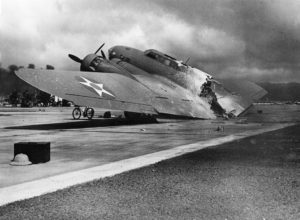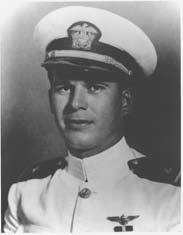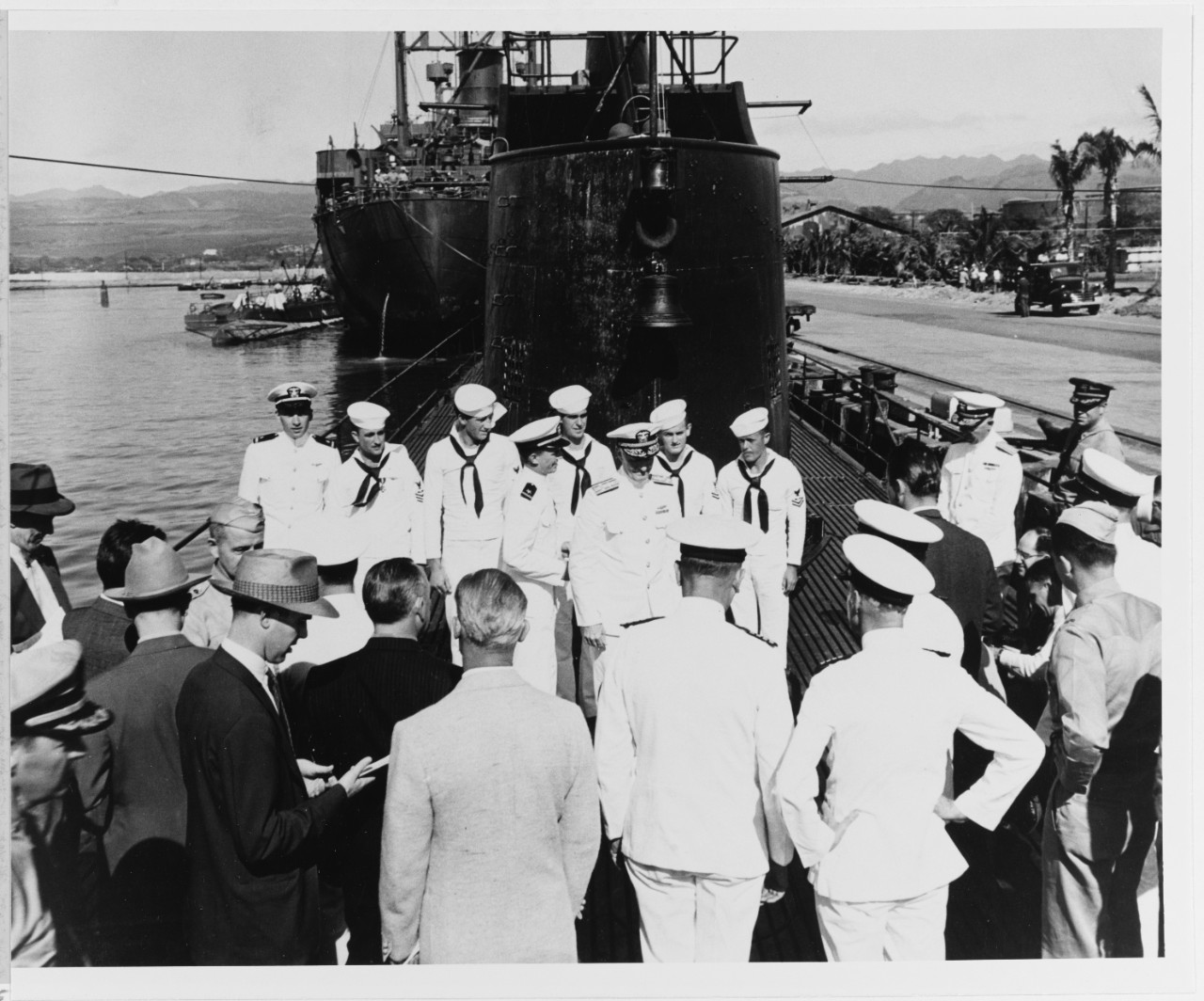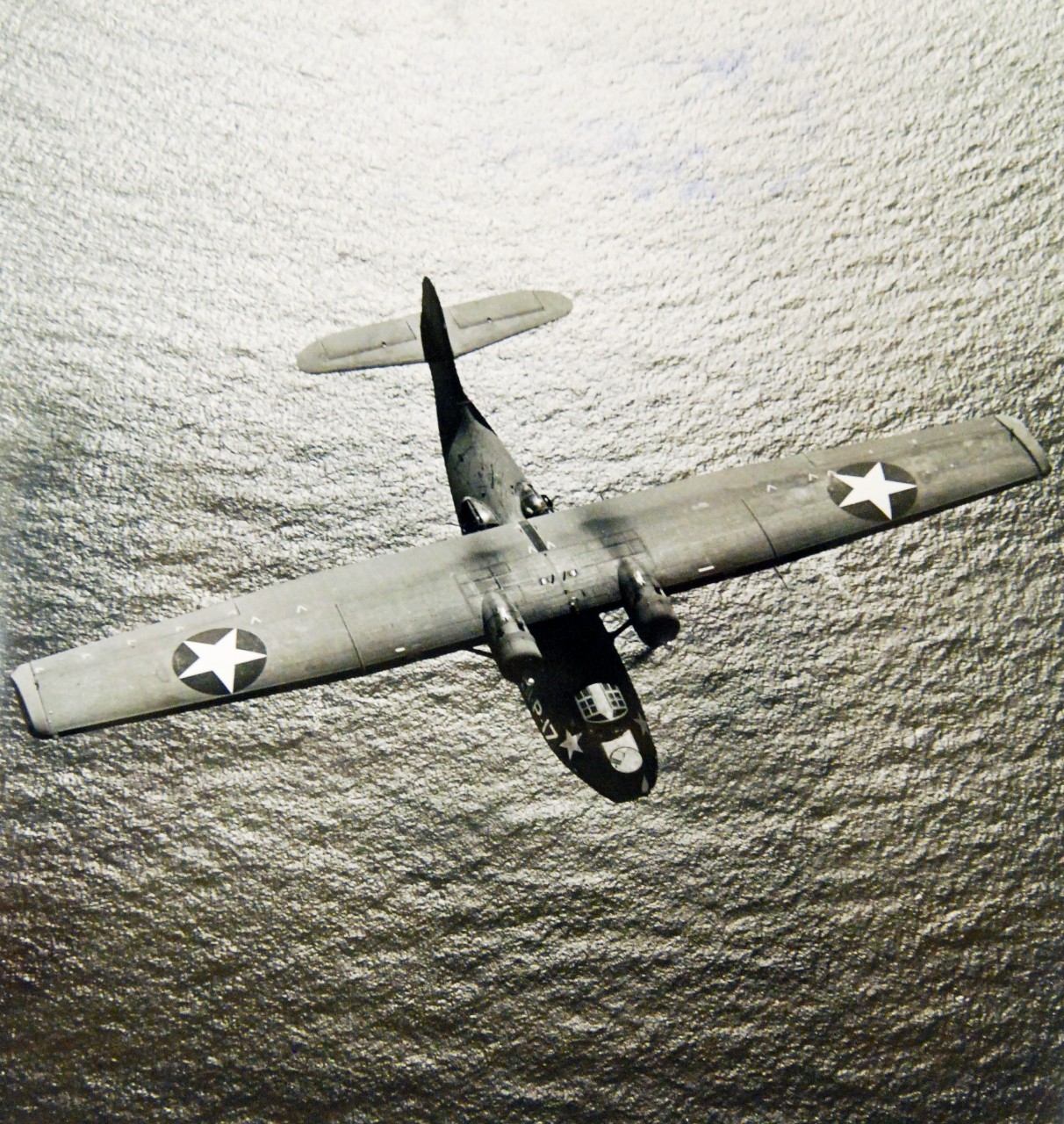Miracle at sea
At 9:00 p.m. on 6 December 1941, the first of 16 B-17 bombers took off from Hamilton Field (just north of San Francisco), headed to reinforce the Far East Air Force on the Philippine Islands. It was Saturday night and the nation was still at peace, so all non-essential items like ammunition were removed to save weight. When the heavy bombers reached Hawaiian airspace at 0800 on Sunday morning, they were welcomed by Japanese machineguns and found themselves ten minutes into a war.

Enemy machinegun fire found the magnesium flares on Capt. Raymond T. Swenson’s B-17C as he was on final approach for Hickam Field, igniting a fire that had burned the plane’s fuselage in two by the time the aircraft rolled to a halt. But 1st Lt. Earl J. Cooper and the other 38th Reconnaissance Squadron pilots managed to safely land their damaged B-17s at Hickam.
Once ground crews repaired their bullet-riddled bombers, the newly arrived airmen were given new orders to fly patrol missions over Hawaii. On 26 December, Lt. Cooper’s crew were one of 16 Flying Fortresses scouring the waves for enemy activity. Patrol range had just been extended to 800 miles, meaning crews would be in the air for 12 hours. When Cooper’s plane returned that evening, the control tower confused their B-17 with an inbound PBY-5 Catalina, assigning both planes the wrong headings. The Navy crew’s assigned vectors caused them to crash, killing all aboard. Cooper followed the instructions, which sent them back out to sea where they ran out of fuel.
After bailing out, nine men crammed into just two life rafts, with no food or water, drifting in the Pacific Ocean with no land in sight.

In the pre-dawn hours of 30 December, Ensign Frank M. “Fuzzy” Fisler and his crew made their way through a blacked-out Pearl Harbor to the seaplane base. Their briefed flight plan was to take their PBY-5 Catalina out 500 miles on a heading of 258 degrees, turn right 90 degrees and fly 50 miles, then head home. Weather was forecasted to be rough with a winter storm passing through, churning up 30 to 40-foot seas.
As they taxied down the seaplane ramp and into the harbor, Ensign Fisler and his copilot Naval Aviation Pilot 1st Class Leonard H. “Snuffy” Wagoner saw a rainbow sheen on the water. Although the Japanese attack was three weeks ago, the massive amounts of oil pouring out of sunken and damaged ships was still everywhere. Fisler’s men were on their own once the Catalina was airborne — crews were operating under radio silence. This was when human eyeballs, not radar, carried out the exhausting task of scanning for targets.
By 1300 hours, the crew had finished their 50-mile cross-leg and made their turn for home when one of the men saw a smoke flare. It could be a submarine identifying himself as friendly or some unfortunate souls drifting on the ocean, so Fisler turned to get a closer look. It was in fact two liferafts tied together, pitching up and down in the heavy seas, but there was no way of knowing in these conditions whether they were Americans or Japanese survivors from the Pearl Harbor attack. To keep from losing sight of the rafts in the weather, they dropped smoke to mark the position as they broke radio silence to tap out an urgent Morse code message to headquarters reporting that they had located a shipwrecked crew.
The response from Pearl was to drop a package of food and water for the men and continue on to Pearl since there shouldn’t be any Americans in the area. There was no way of knowing that the B-17 crew had survived and drifted hundreds of miles to the west (in fact, Cooper’s crew thought they were northeast of Hawaii). Keeping the patrol plane on its flight plan was an easy decision for officers manning a desk at headquarters, but not so easy for the men who could see humans who would die if they kept flying. After all, it could just as easily be the Catalina crew riding the waves and praying for rescue. American or not, leaving the men behind would wear on the souls of Fisler’s crew for the rest of their lives.
Cooper and his crew had spotted planes before, but no one saw them. Firing their last signal flare miraculously got the attention of the Catalina, despite the storm. They now had not only hope, but a package of food and water. Between waves, they could see the plane orbiting overhead (as they waited for permission to land), but soon the plane disappeared into the clouds. There was no way that a plane would land in this mess. But at least their position had been reported. Now they just had to live long enough for a ship to find them.
But what Cooper’s men didn’t know was that the nearest ship was 48 hours away. If anyone even bothered dispatching the vessel, who knows how many hundreds of miles the storm would have moved them, or in which direction? The Catalina was their only hope.
In the air, Fisler said he was willing to land, but not without support from his entire crew. He had never landed in the open ocean before, but his enlisted (and more experienced) co-pilot, had. They unanimously voted to attempt the rescue.
The men in the life rafts were shocked to see the Catalina suddenly appear with their landing gear extended.
As soon as the Catalina hit the massive waves, the ocean started tearing the plane apart. The stress of the tossing ocean caused the plane to groan terribly. Rivets began popping out, forcing the now-seasick crew to find creative ways of keeping the plane from sinking like shoving pencils into the holes. Taxiing to the rafts proved to be an incredible challenge; the seasoned copilot had to fight the waves and wind to reach a moving target that they could only occasionally see. If that wasn’t challenging enough, Wagoner had to keep the survivors from drifting into the propellers or banging into the plane itself.
It took William B. Watson, Howard C. Cupps, C.C. Forbes, and Ensign C.F. Gimber a little bit of luck, a lot of skill, and two grueling hours to capture the boats and haul the exhausted, sunburnt B-17 crew aboard the Catalina. While the crew fed the starving survivors in the back, the pilots had to quickly figure out how to take off from waves the size of large buildings in an overloaded plane. Wagoner throttled the engines as they rode up the waves, then used the downhill side to gather speed. They had to choose the right wave to use as a ramp, because the combination of speed and heavy seas was quickly tearing their Catalina apart.
Once they were airborne, they still had to figure out exactly where they were — in a storm — so they could chart a course for the 500-mile trip back to a blacked-out Hawaii. Not only was their battered plane missing parts, it was now running low on fuel. Despite all the odds stacked against them, they spotted land at 2300 hours and soon their incredible mission was over. “Outside, we were greeted by a huge contingent of jubilant people including our own skipper, several admirals and generals, and what looked like most of our squadron shipmates,” wrote Wilbur W. “Rip” Warlick, the Catalina’s radio operator. “We were thanked by the Commanding General of Hickam Field for the return of his crew. All told, it was like being in Times Square on New Year’s Eve. Soon, we were hustled off to a thorough debriefing and finally relieved of duty to retire to our quarters.”
The next day, Fisler’s crew was ordered to report in full dress uniform to the submarine base, where the newly promoted Pacific Fleet commander Rear Adm. Chester Nimitz personally decorated the men for their death-defying rescue.

Epilogue
Lt. Fisler (of Bladen County, N.C.) flew a PB4Y-1 Liberator from Guadalcanal’s Henderson Field to attack enemy shipping at Bougainville and was lost on 5 March 1943. Howard C. Cupps (of Hennepin County, Minn.) was also lost in 1943. Warlick (of Lincolnton, N.C.) entered aviator training and would become an instructor pilot. He flew 135 missions during the Berlin Airlift and flew to Cuba during the Bay of Pigs invasion. He retired as a commander and passed away in 2005. Wagoner (of Norfolk, Va.) also went on to become a commander, passing away in 1990. Little can be found for C. F. Gimber William B. Watson, or C.C. Forbes.
Click here for Fisler’s Navy Cross citation and here for Wagoner’s Navy Cross.
